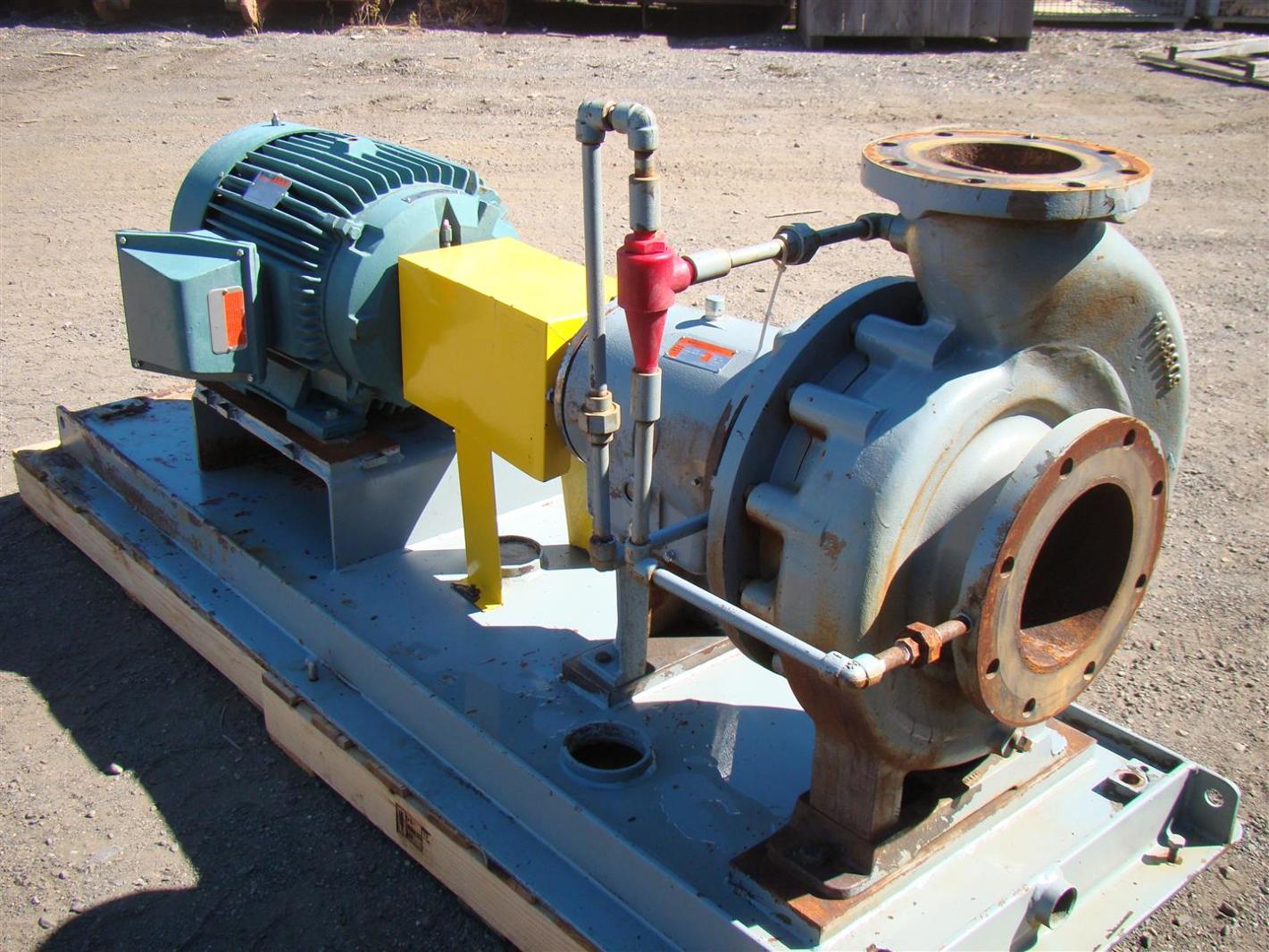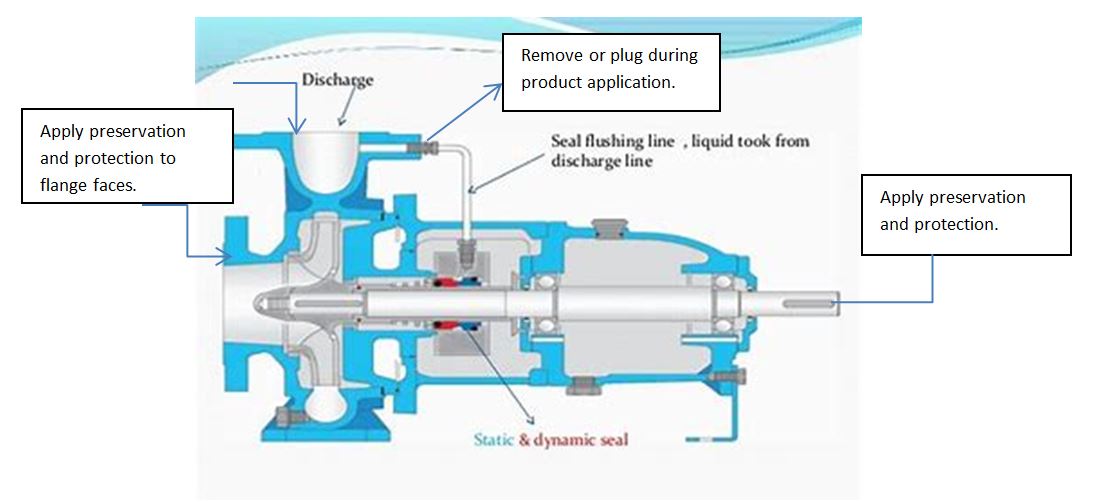Title Page
-
-
Client / Site
-
Document No.
-
Conducted on
-
Prepared by
-
Location
Overview
-
Internal components requiring protection (Power End)
• Bearing (Housing) casing
o Generally made of iron but can involve a wide variety of materials, from stainless steels to plastics.
o Oil lip seals or labyrinth ring seals.
• Rotating elements
o Shafts, bearing, mechanic seal components.
Internal components requiring protection (Process Side)
• Vault casing
o Generally made of Iron but can be a wide variety of materials, from stainless steels to plastics.
• Rotating elements
o Impeller, shaft, mechanical seal components.
External components requiring protection
• All non-coated or painted surfaces shall be protected with a brush or sprayed on VpCI product.
• Pump shaft should be preserved with a brush or sprayed on VpCI product
o Caution should be taken to minimize excess product on the oil seal.
o Shaft may also require additional protection to be installed, to prevent physical damage.
• Pump inlet and outlet nozzle flange faces shall be preserved and protected from physical damage.
• For long term storage outdoors, UV protection (shrink wrap) should be considered.
Action
-
-
Take a photo of equipment as it is presented
-
Internal Component Protection
-
Internal inspection should be performed via removal of inspection panels or borescope. Most often, the only method of inspection is through the oil fill plug (Item # 53) via a 4 to 6mm articulating borescope. Objective is to visually inspect the condition of the housing (casing) internals, rotor or shaft, and bearings (Items # 42 A/B& 31) looking for signs of corrosion, water, discoloration, and physical damage.
Note: Determine the type of oiler on the pump; often there will be a constant level bowl-type oiler. These should be removed and casing hole plugged, as they are a source of moisture ingress and air exchange. If they cannot be removed, pumps should be wrapped and sealed in UV rated plastic. -
Detail condition of internal components. Upload photos if available.
-
Upload multiple photos from borescope as available.
-
Select recommended course of action
-
Is there a constant level bowl type oiler?
-
These should be removed and casing hole plugged, as they are a source of moisture ingress and air exchange. If they cannot be removed, pumps should be wrapped and sealed in UV rated plastic.
-
Take a photo of plugged oiler or if not plugged evidence the equipment has been wrapped in UV rated plastic
-
Once inspection is complete, fill pump with pre-determined preservation fluid, such that the fluid is just below the pump shaft, but not at a height above the lowest point of the oil seals. Oil could leak from oil seal if fluid is at or above the pump shaft while pump is not in operation. Preservation fluids should be a mixture of light oil and a VpCI oil additive. Having a mixture of oil and VpCI will allow for the pump to be rotated while providing VpCI protection in the void space. After the correct level has been achieved, replace fill plug vent (Item # 53) with a non-vented plug to stop air exchange to the pump internals.
-
Inspect Process side of pump
-
An internal inspection should be done on the process side of the pump through the suction or discharge nozzles or through the casing drain plug. Objective is to inspect the internal casing and impeller for corrosion, signs of physical damage, and moisture ingress. Apply pre-determined VpCI product. Product and product application should be determined by pump component materials, process compatibility, commissioning, and operational constraints.
-
Detail condition of internal components. Upload photos if available.
-
Add media
-
Does shaft rotate freely without any binding or lumps in movement?
-
Is there any deflection in shaft?
-
Is there indication of any water in the housing?
-
Did the unit require additional preservation fluid to be added?
-
-
Is there tubing from the discharge nozzle to the mechanical seal (used for cooling or flushing)?
-
Cooling/flushing pipe shall be removed and ports blocked prior to application of VpCI. Take photo as evidence ports have been blocked.
-
Date and time inspection completed
-
Name and signature of technician completing inspection
-
Name and signature of client representative

















